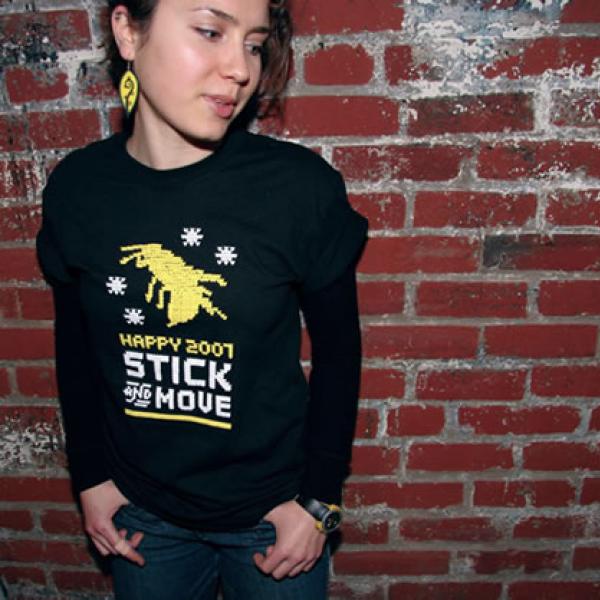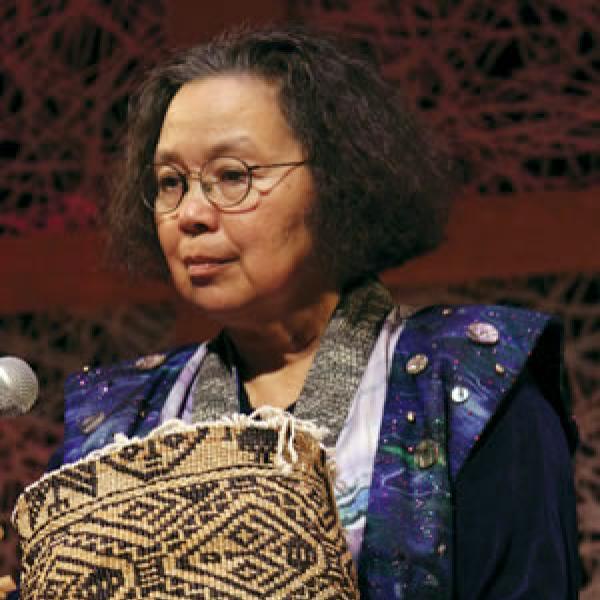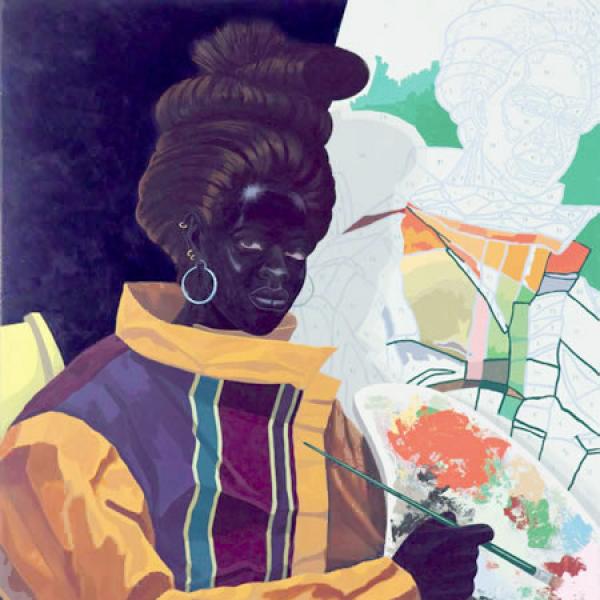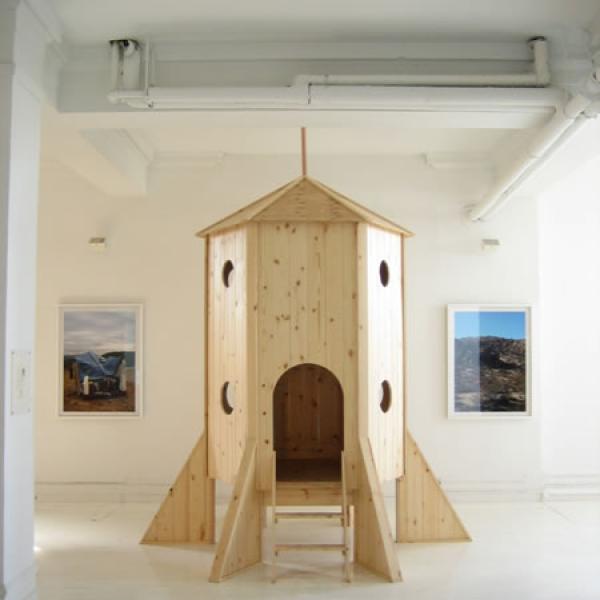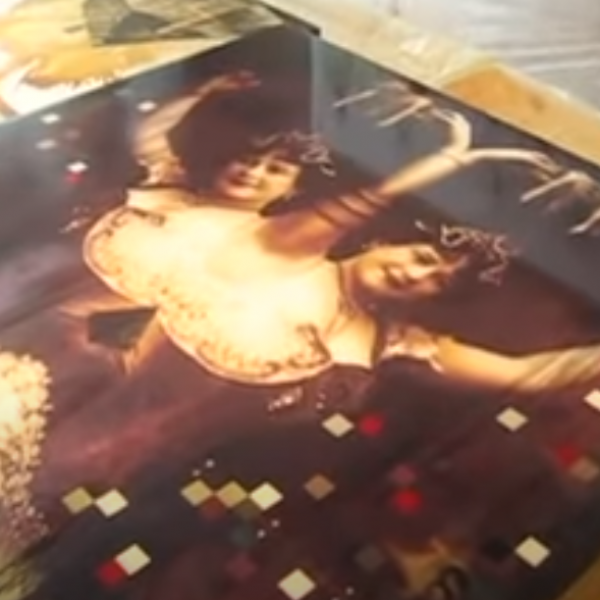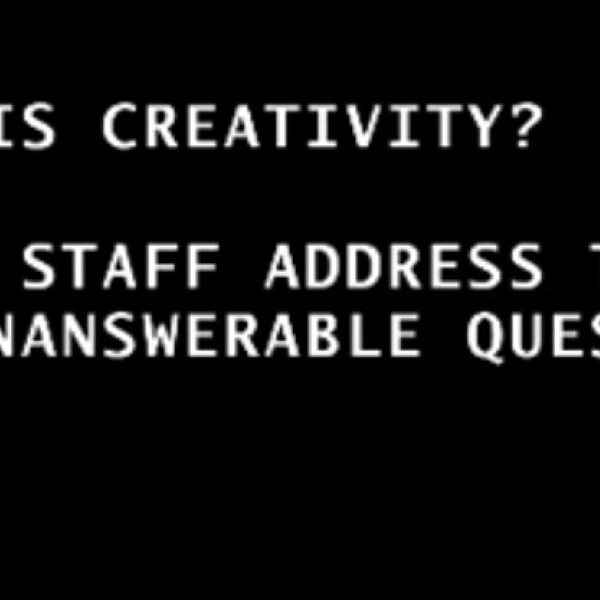Holding a Mirror to the World
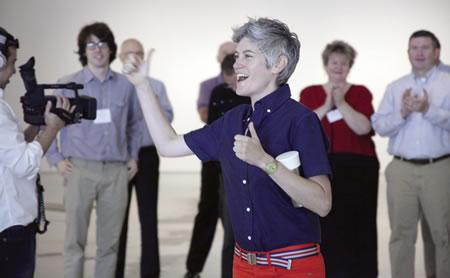
Not surprisingly, Colleen Macklin opened her presentation at the 2010 NEA Education Leaders Institute workshop by having the assembled educators and arts leaders play a game. Photo by Nat Soti
Ask game designer Colleen Macklin to say what creativity is, and she'll reply with what it isn't: "I think a lot of people think that creativity is an innate thing that certain people possess, and other people don't… that it comes embedded in genes. I actually think that's not the case, I think it's an inherently social construction.…What's really interesting when you listen to people talk about their creative process is that creative and process come in the same pair. When we talk about creativity, we're really talking about a way to arrive at unexpected places and unexpected ideas."
"Arriving at an unexpected place" is also an apt description of Macklin's career path. She is currently an associate professor in the department of communication design and technology at Parsons The New School for Design, where she also heads PETlab, a design lab that develops games around social issues. Although Macklin had been interested in game design since she was a youth, she trained as a photographer and media artist. A sojourn at a New York City ad agency and time spent designing environments for what Macklin calls "intellectual raves" helped her develop not only top-notch computer coding skills but a self-described obsessive interest in creating interactive user experiences. "My work as a fine artist was always for me an opportunity to collaborate with friends -- whether it was having them pose for the camera or act my films. I really found it was just an excuse to do interesting and creative things with people who are interesting and creative. In game design, that holds true as well; it's a collaborative process."
Macklin's unique pedigree gives her particular insight into the intersection of games and the arts. Visual arts and design might seem to be the only overlap between the two fields. Macklin pointed out, however, that the similarity is actually much more comprehensive: games and works of art share the same inherent power to reframe one's way of thinking. "When we play a game we learn about our own patterns and our own styles through the game, and oftentimes we try on new kinds of ways of seeing the world or ways of acting in the world that I think surprise us and give us an opportunity to reflect on how we interact in life. I think games are these wonderful mirrors to the world and the world's systems, and just really give us an opportunity to try things differently… I think the best art [also] does that; it helps you see something in a new way."
The arts -- and by extension, the creative process -- and games also have something else in common according to Macklin: the need for constraints. She posited that both play and the creative process are at their most generative in the presence of rules and limitations, which force one to problem-solve and oftentimes come up with unusual solutions. "It's not much fun to play golf by just holding the ball, walking over to the hole, and dropping it into the hole. It's more fun when we give ourselves a challenge and we have rules and we hit the ball with a little stick from far away. Creativity is similar… I think that even if people don't have external constraints, they develop their own constraints in order to be creative. That's part of what the process is about -- identifying constraints on the process or of thinking that really lead to creative outcomes."
Games also teach another important aspect of creativity: failure -- and the learning that comes from persistence at a certain activity despite failure. As Macklin explained, "You actually are learning by failing. It's fun to play around in a video game, for instance, and learn the rules through failure. You turn the game on, and you mess up. And you mess up over and over again until you understand the rules of that system and until you get better. You improve over time."
Macklin cautions that not recognizing these linkages between game play and creativity is especially detrimental in the classroom. In fact, at a recent National Endowment for the Arts Education Leaders Institute workshop, she reproved the gathered educators for ranking "play" toward the bottom of necessary 21st-century skills. Macklin explained her thinking: "Games are unique objects or forms that let us bring together science, technology, engineering, math, and art into one form. Not just learning how to make games, but [the act of] thinking about creativity is going to be crucial to our future.… A lot of the big problems we have today are systemic. So I think using games as a creative and fun way to think through systemic issues is definitely going to be a strategy we have to cultivate in the 21st century. Games help us evolve as human beings; they help us gain new intelligences."
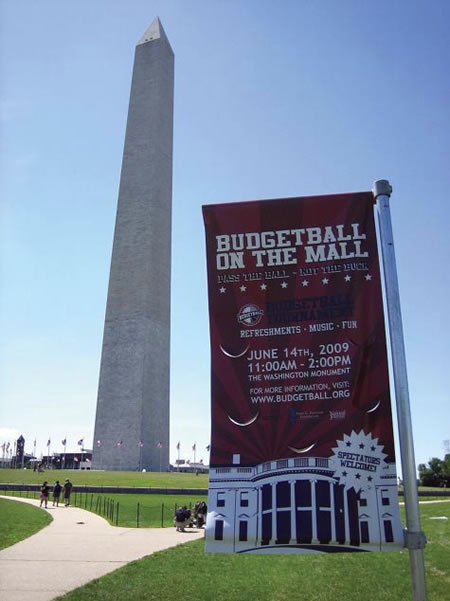
Budgetball is a non-contact, active sport for teams of 6–10 players designed to increase awareness of the national debt; tournaments have been played across the country at sites including college campuses, leadership conferences, and even the National Mall. Photo courtesy of Colleen Macklin |
A quick look at the games Macklin has designed in recent years -- in collaboration with her students at PETlab, and with the game design collectives Local No. 12 and Leisure Society -- proves the utility of game play in encouraging creative thinking around social issues. For example, Budgetball, a sports game, literally helps players gain a visceral understanding of the national debt while developing physical (and metaphorical) defenses to stop debt encroachment. Re:Activism NYC, a puzzle-solving race similar to geocaching, examines the history of civic activism in New York City, while Weather or Not, a brand-new card game developed for the Red Cross, Red Crescent Climate Change Center, explores climate-related disaster response. Noting the practical applications of the Red Cross card game, Macklin said, "It is meant to illustrate a basic understanding of probability as well as the kinds of decisions one needs to make in order to prepare for a disasterlike setting."
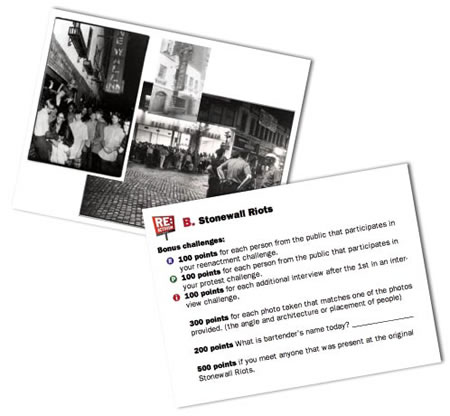
Play cards from Macklin’s game Re: Activism NYC , which examines the city’s history of civic activism. Image courtesy of Colleen Macklin |
Ultimately, Macklin maintains that games present an unlimited opportunity for 21st-century learning and innovation across disciplines. They offer a collaborative, practical way to arrive at extraordinary solutions by reframing how we tackle seemingly unsolveable and overwhelming situations. "I really think that creativity and play have this kind of wonderfully subversive potential. I think the word subversion has a negative connotation, but when you imagine some of the biggest breakthroughs, inventions, and ways of solving problems, they really are subversions of different systems. They're ways to turn something upside down and look at it from a weird angle, or change the way that we think about what something is for or what a system is for.… I think play and creativity are very linked, and to recognize them and the potential they have and enable a space where failure and subversion and all of these things can happen, I think is going to be the key to our future."


